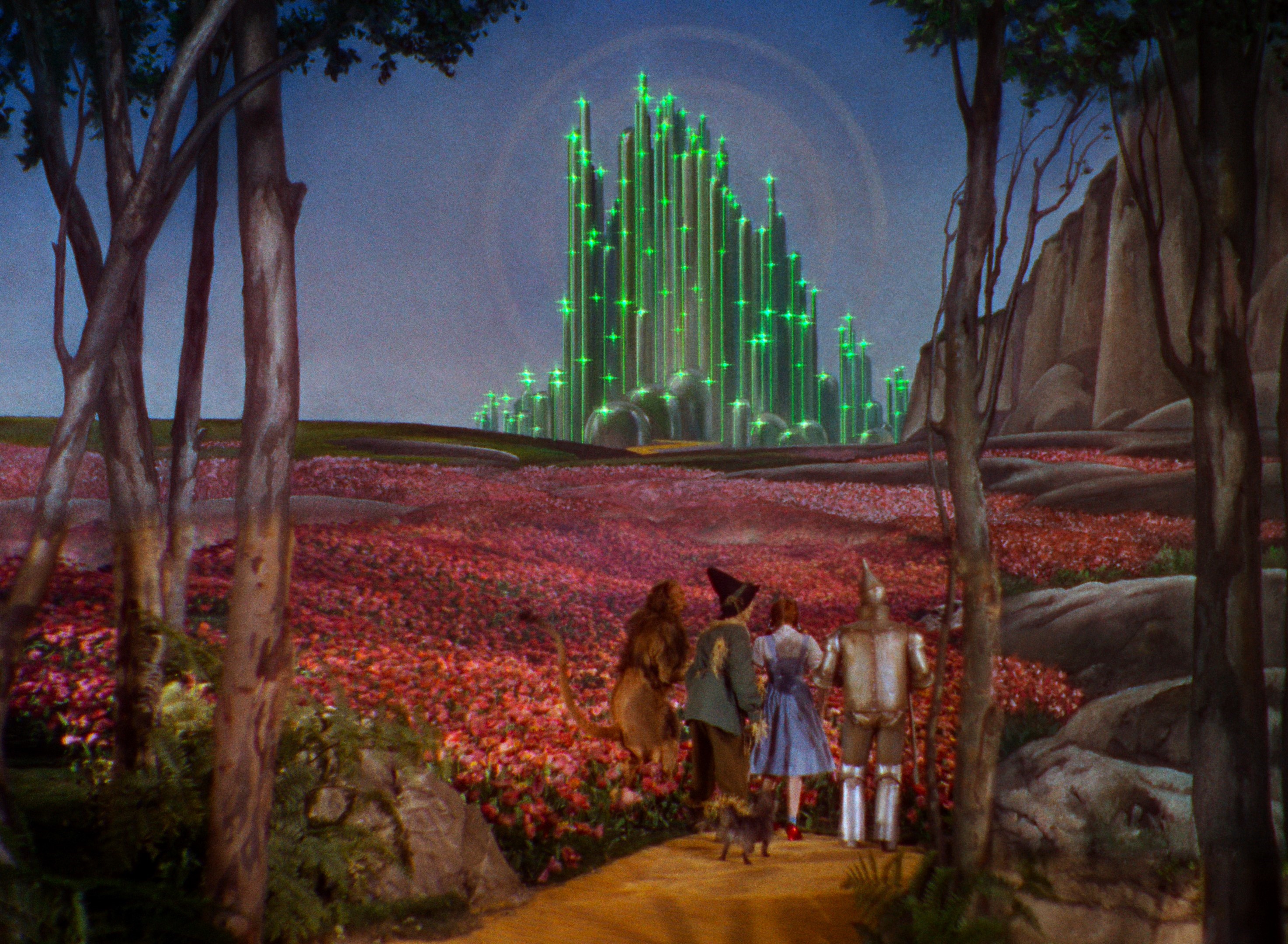
Wizard of Oz (1939)
Victor Fleming
Wizard of Oz (still)
1939
Film, colour, sound
102 minutes
Image courtesy of Film San Frontiérs
search


Victor Fleming
Wizard of Oz (still)
1939
Film, colour, sound
102 minutes
Image courtesy of Film San Frontiérs
Re|sound is Sharjah Art Foundation’s biannual event for musical experimentation in dialogue with the medium of film. Locally and regionally based musicians are invited to prepare and perform live original sets in conversation with a projected film.
Re|sound VII and Re|sound VIII, the 2022 editions of the event, present films that feature protagonists who navigate a surreal escapist fantasy in order to process the real-world issues they are facing.
Re|sound VII’s The Wizard of Oz is one of the earliest films to use colour. The film presents contrasting visual styles: the mundane black and white is associated with idea of home while the bright and vibrant colours are used to depict the dreamy landscape in the world of Oz. In contrast, Re|sound VIII’s Mirrormask stylistically doubles down into a dark and gritty aesthetic that is present throughout the film.
Re|sound VII and Re|sound VIII are free and open to the public; however, advance reservation is required as spots are limited.
Wizard of Oz (1939)
Director: Victor Fleming
USA
Narrative |102 minutes
English
When a tornado rips through Kansas, Dorothy Gale and her dog Toto are whisked away from their house to the magical Land of Oz. They follow the Yellow Brick Road towards Emerald City to meet the Wizard. On the way, they meet a Scarecrow who wants a brain, a Tin Man who wants a heart and a Cowardly Lion who wants courage. The Wizard asks them to bring him the Wicked Witch of the West's broom to earn his help.
This film won Best Feature Film and the Outstanding Artistic Contribution awards at the Faro Island Film Festival in 1939. It also won an Academy Award for Best Music in the same year, and was nominated for Best Picture, Best Art Direction and Best Special Effects.
Kinematik is a post-rock ensemble hailing from the village of Rayfoun in the Lebanese mountains. Established in the summer of 2014, Kinematik recorded and released its debut album Ala’ in 2017, followed later that year by a string of performances in Lebanon as well as a number of European venues as part of a tour organised by Beirut & Beyond International Music Festival.
Both Ala' and its follow-up album Murur Al Kiram were recorded and co-produced by Fadi Tabbal from the recording studio Tunefork. Murur Al Kiram was released by Ruptured in the winter of 2020, in the early days of the bloody Lebanese uprising and the COVID-19 pandemic. Spending the better part of 2020 under lockdown, Kinematik came to grips with Lebanon's and the world's new realities, battling societal, economical and sanitary hurdles and obstacles.
In October 2020, upon receiving an invitation from Irtijal Festival in Beirut to perform in its 20th edition, the group evolved into a full-blown ensemble, comprising a total of six musicians—the core line-up of Anthony Sahyoun, Rudy Ghafari and Akram Hajj was joined by frequent collaborators Jad Atoui, Ziad Moukarzel and Teddy Tawil.
The Irtijal performance laid the roots for a series of recording sessions that coalesced a few months later into the long-form, elaborate compositions that make up Al Jadi, the band's third album, with the idea of imitating the mechanics behind electronic music, in a jazz-like big band format. The result is a culling, a peek into the annihilation of everything that breathes, a sick joke.
Kinematik has also toured Europe and the Middle East, re-scored Carl Theodor Dreyer’s 1930s classic Vampyr for the the 23rd European Film Festival in Beirut, and contributed pieces for soundtracks to Ghassan Salhab’s Une Rose Ouverte and Sarah Kaskas’ Underdown.
Re|sound VII and Re|sound VIII are free and open to the public; however, advance reservation is required as spots are limited.
Book your tickets here.